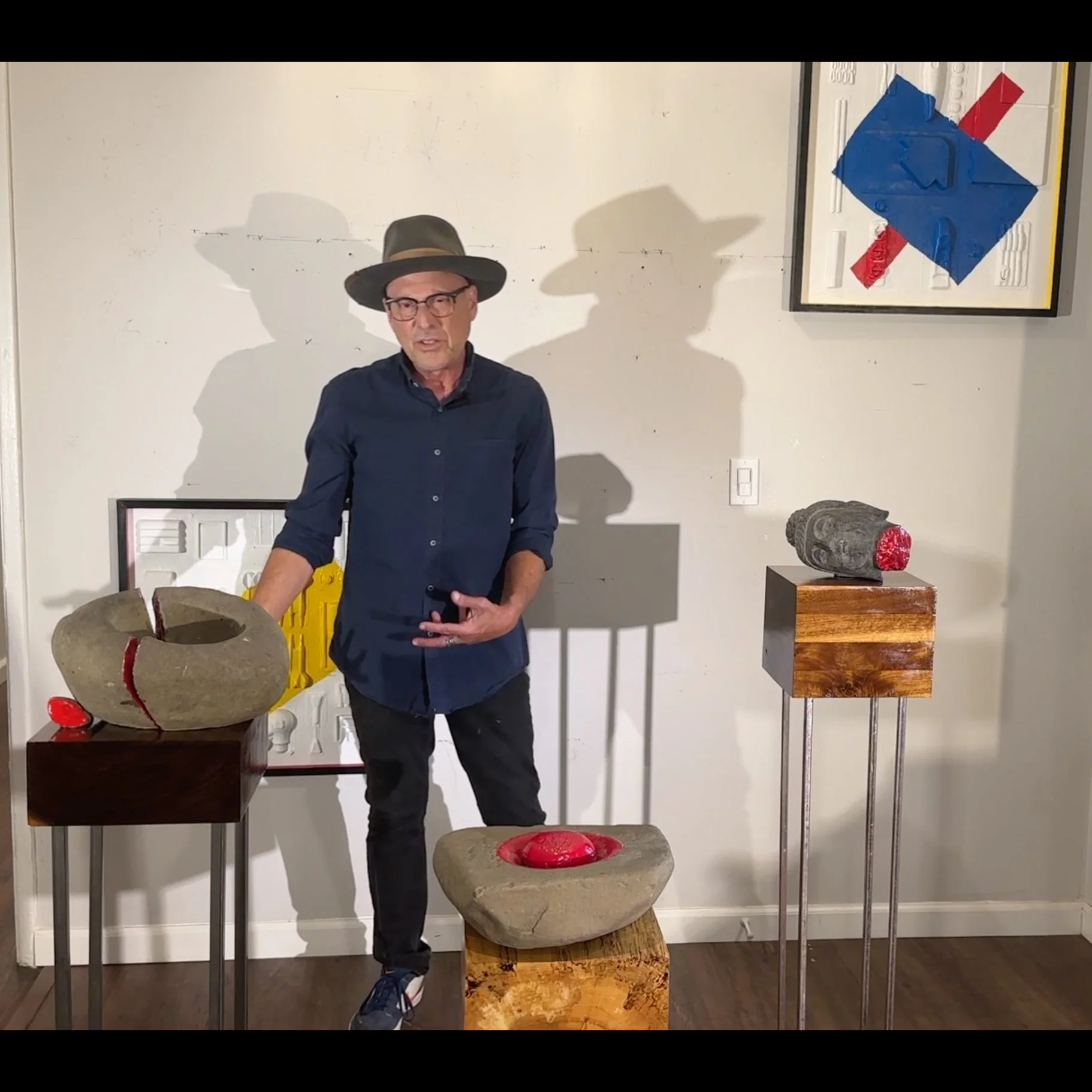In Episode 5 of The Steve Sas Schwartz Podcast I discuss my Soul Kitchen series. This is a conceptual / sculptural series loosely based upon the Japanese tradition of Kintsugi, where broken crockery is repaired with gold leaf, tracing the history of the break and fix.
For those that don't know, I work in different genres at the same time, abstract, figurative, and conceptual. This is the conceptual leg.
Hope it's interesting and provocative.
Steve
Soul Kitchen
In this series I want to speak a bit about my Soul Kitchen series. Some of the source materials are upgraded found relics or artifacts that I’ve reappropriated and 'fixed,’ somewhat like the Japanese tradition of Kintsugi, where broken crockery is reassembled with gold to both repair, enhance and acknowledge the wound. In my case I use blood red to emphasize and set the breaks.
In these pieces and through developing this series I got in touch with a profound sense of form, the essence of sculpture. I would argue one cannot sculpt without having a deep feeling for volume, space, weight, materials, and what they suggest. I, anyway, only had my ‘a ha’ moment while sculpting, like an avalanche realization, “Oh!”
With these works I play with elemental materials, stone, steel, and wood. Here, the pedestal is part of the piece, I don't buy the conspiracy we're supposed to ignore the giant blocky white cubed things supporting the sculptures, willful blindness, today re-coined as mass formation psychosis. Those pedestals are a great argument for the adage “sculpture only exists to trip over as you back up to see a painting.” For me, anyway, all should be considered in the field of view. In these pieces, the element of wood, solid, dense blocks of hardwoods such as black walnut, mahogany, spalted maple, and others, you can feel the weight, volume, and solidity, as well as yes, the value of the chunk, and appreciate the color, grain, polished-cubed shape as it supports the stone, doctored relics on steel spindles. Each segment respects the material, and complements each other like yin and yang, cube, sphere, and line, fundamental components of art making, all the noise stripped to the barest of essences, a core language.
The stones' color, texture, and matte quality contrasts with the glossy, polished wood mid-sections, which support and define each other. The height's determined by the linear spindles, a profile that suggests both elegance and sturdiness, levity and weight.
The stone is where things deepen. They are volumetric, rounded, and carved. In two cases they were utilitarian objects, metates or Native American grinding bowls, worn through and discarded. They possess a wonderful worked, handled, carved quality. This one seems faceted as if it was shaped to be held by some frame or something. These things would look amazing blown up to enormous proportions. Here I’ve high-lighted and treated the wounds by painting them a glossy, fire-engine red.
The amputated buddha head is of course it’s own thing, a carved stone buddha head flea-market find, meant to indicate an old statue where the head was lopped off. Perfect. Here I’ve changed up the narrative and made it a beheading, painting the severed portion a blood red with glowing nitrocellulose (a juicy form of lacquer commonly used in nail polish). The same foundational rules apply here: sphere, cube, and line, tools in the toolkit.
Presentation and materials unite the Soul Kitchen series, though conceptually each piece is distinct.


